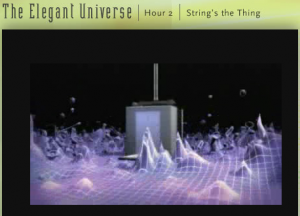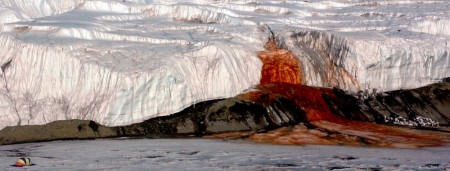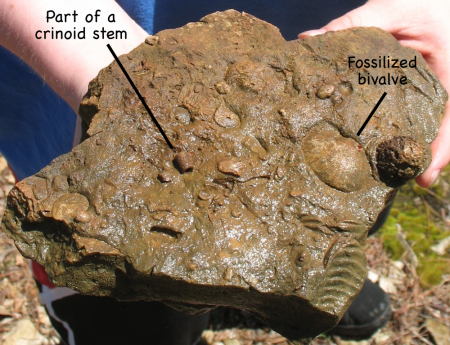
Along the edge of Pickwick Lake are outcrops of sedimentary rock being slowly broken apart by the action of the waves on the reservoir. We stopped for lunch at Shelter #6 in Pickwick Landing State Park (see map) before finding our cabins for this immersion. Located at the eastern edge of a triangular ridge of land girded by drowned river valleys on two sides the shelter is almost surrounded by water. On a beautiful, clear day at the beginning of spring, with temperatures verging on t-shirt weather, tiny flowers blooming in the grass and tree leaves just sprouting, it was an almost perfect time and place to take a break after a long drive.
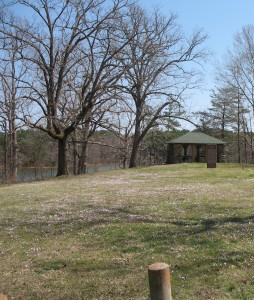
Yet despite the fact that we were eating later that we normally do, half the class walked right past the shelter and down the rough slope to the lake’s edge. There they found fossils. Beautiful crinoids were weathering out of thin (4cm thick) alternating layers of sandstone and limestone, their long fossilized necks resisting while the limestone around them slowly dissolved away. They also found bivalves partially exposed on the face of the broken cliff and in the small pile of tallus. There were even a few thin sandstone wedges sitting on the rocks at the edge of the water that looked like fossilized burrow molds. It was quite fascinating.
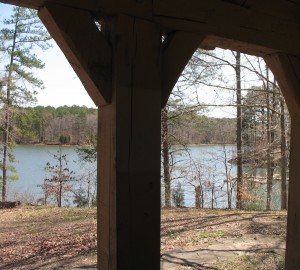
Neither the word “science” nor the phrase “natural world” was used, and they brought the questions to me, which I always consider better than me asking them. Next year when we study Earth History perhaps the subject will be considered boring when we see it in the classroom, but today, out there on the rocks at the edge of the water, they got a great primer.
This stop, planed solely as a lunch break was so successful that I now wonder if I should plan the immersion trips to introduce the topics we cover in class rather than using them to integrate what we’ve already seen. Let the outdoor experience be the “spark the imagination” part of the lesson. I’m not sure, but it’s something to think about.
[googleMap name=”Picnic Shelter #6, Pickwick Landing State Park” description=”The picnic shelter is located at the point due west of this marker.” width=”480″ height=”400″ mapzoom=”15″ mousewheel=”false”]35.055555, -88.232[/googleMap]
